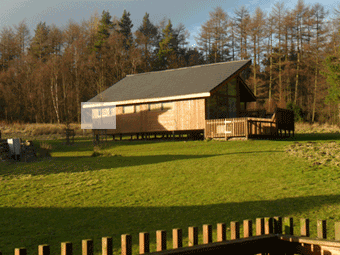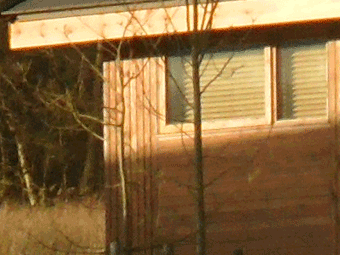There is a large selection of CCTV Cameras available in the UK, it can be very confusing trying to figure out what cameras will be most suitable. So we have put together some information about the features available, so that you can try to make the right decision. Simply look through the features listed below, and try to see what is important for you, keeping in mind the purpose of your CCTV system.
The below features are in order of importance - however it's not set in stone, for example resolution & lens size are both equally important - and of course depending on your unique requirements anti-vandal features could be far more important to You!
The resolution of a camera is measured in 'TVL' except for the very latest SD cameras which have a resolution called 960H.
Simply put, the higher a TVL - the better image a camera can produce. As image quality is very important in CCTV we advise all customers choose the highest resolution that there budget allows. Below is a list of some available SD CCTV camera resolutions from best (1) to worst:
| 960H | 600TVL |
| 700TVL | 540TVL |
| 650TVL | 480TVL |
| 420TVL |
HD over Coax Cameras are available with just two resolutions:
1080P
720P
Many of us are familiar with 1080P HD, as we have heard about this resolution with televisions, 720P is roughly half the quality of 1080P.
IP cameras are available in many different resolutions, from 420TVL upto 20 Megapixel and above. Here at JMC we try to limit the range with:
4K Ultra HD
8.0 Megapixel
6.0 Megapixel
5.0 Megapixel
4.0 Megapixel
3.0 Megapixel
1080P HD
2.0 Megapixel
1.3 Megapixel
720P HD
The lens on a camera is what determines the angle of view etc, so is very important. A basic principal to remember is the smaller the lens - the wider the angle - the larger the lens - the narrower the angle / more zoomed in the view.
So for example a 50mm lens would provide an image 10x zoomed in when compared with a 5mm lens.

if this was a 5mm Lens...

this would be a 50mm lens image.
Infrared LEDs, aka IRs, are what give a camera the ability to see in complete darkness (0 lux). This ability is measured as the "Lux" Level, cameras with IR's will see in "0" Lux, cameras without IRs will NOT see in complete darkness as no camera without Infrared LED's can create light. So NON IR cameras will have varying lux levels, below are some approximate lux levels to help give you an idea of how good a cameras night vision is.
0.00005 lux = Starlight
0.0001 lux = Moonless overcast night sky
0.001 lux = Moonless clear night sky
0.01 lux = Quarter Moon
0.25 lux = Full Moon on a clear nightv
1 lux = Moonlight at high altitude at tropical latitudes
3 lux = Dark limit of civil twilight under a clear sky
32000 lux = Sunlight on an average day (min.)
100000 lux = Sunlight on an average day (max.)
To be honest, the above guides are all very "relative" - and not really a practical measurement for your average person, so we suggest it is far safer to simply presume that a NON IR camera is only suitable for well illuminated (day time) scene's, and if you want night time images you will need an IR camera.
Where is the camera going to be installed - indoors or outdoors?
Most of the cameras we sell here at JMC can be used outdoors, infact the few cameras that are indoor only cameras will usually say "indoors" in the product name - making it very clear what cameras can not be used outdoors.
This is important as obviously an indoor camera is not weather proof, and will get damaged by rain.
Officially Weather proof is measured using an IP Rating, if a camera doesn't state an IP rating you can consider it is for internal use only.
The IP classification system designates the degree of protection provided by an enclosure against solid objects or water ingress.
There are always two digits in an IP rating, the first digit refers to the protection against solid objects (dust) and the second digit refers to the protection against water.
0.Non-protected
1.Protected against a solid object greater than 50mm, such as a hand.
2.Protected against a solid object greater than 12.5mm, such as a finger.
3.Protected against a solid object greater than 2.5mm, such as wire or a tool.
4.Protected against a solid object greater than 1.0mm, such as wire or thin strips.
5.Dust-protected. Prevents ingress of dust sufficient to cause harm.
6.Dust tight. No ingress of dust.
0.Non-protected
1.Protected against dripping water.
2.Protected against dripping water when tilted up to 15Âş.
3.Protected against spraying water at an angle of up to 60Âş.
4.Protected against splashing water from any direction.
5.Protected against jets of water from any direction.
6.Protected against heavy seas or powerful jets of water. Prevents ingress sufficient to cause harm.
7.Protected against the effects of temporary immersion in water.
8.Protected against the effects of continuous immersion in water.
So for using CCTV cameras outdoors, We would recommend a very minimum IP rating of 55, but preferably 65 and above.
Is the camera going to be installed in such a place it may be subject to vandalism? if so make sure you use a vandal resistant camera.
Most outdoor cameras will be made of metal which will give it some protection - however some cameras are called vandal resistant (aka anti-vandal) which means they should withstand considerable force.
Most of these anti-vandal cameras will be dome shaped - We usually like to point out to customers that even though they are "vandal resistant" if someone has an hour to stand by a camera and repeatedly smack it with a baseball bat, there are not many cameras that will withstand that. But they are the best option when they have to be located relatively low - and may be subject to some vandals.
Finally we have Pan tilt and zoom cameras - these are the very best of cameras, they can be fully controlled to zoom in and out and rotate 360 degrees, so you can get a great shot of almost anything. Some have 36 X Zoom, meaning you can make a subject appear 36 times closer - imagine facial recognition at 36 metres.
Most DVRs will be able to control PTZ cameras using RS485 - make sure you check to see if your DVR has this feature - if it has you then need to check that both the PTZ camera and the DVR can commuinicate in the same language (this is called protocol). There are hundreds of different protocols, so be sure to check specifications to make sure your choice of products can both use the same protocol.
As much as we love PTZ cameras and consider them to be by far the best type of camera - they are only suitable for a small amount of applications. For example, its not really something we recommend for home security. Why? simply because the true benefits of PTZ cameras are only used when there is a person watching & controlling the camera. So in a large retail park with 24 hour manned guards - obviously they are a great choice as the guards can control the cameras all the time. But at your house when you go out - there is no one to control the camera - so it really just becomes a very expensive fixed camera.